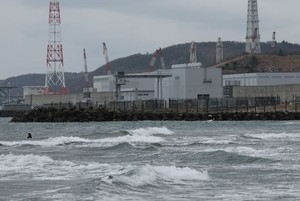THE ASAHI SHIMBUN
August 14, 2023 at 18:49 JST
U.S. air raids continued against Japan until the day of its surrender in the Pacific War because Tokyo was reluctant to accept the Potsdam Declaration over the emperor’s status, according to researcher Yozo Kudo.
“It is difficult to end a war once it started,” said Kudo, 73, secretary-general of the national association of groups recording air raids and war damage. “It is important not to let (politicians) start a war. It is vital to choose politicians based on a level-headed judgment.”
Excerpts from his interview follow:
* * *
Question: Were there air raids on Aug. 15, 1945, when Japan surrendered?
Kudo: The United States carried out air raids from Aug. 14 to early Aug. 15. More than 1,000 aircraft, including 825 B-29 bombers, attacked targets nationwide. It is believed to be the largest number of aircraft deployed for (a string of) air raids during the Pacific War.
Q: Which cities were attacked?
A: Targets included Osaka, where Osaka Arsenal and Kyobashi Station were bombed, Akita’s Tsuchizaki district, Isesaki in Gunma Prefecture, Kumagaya in Saitama Prefecture, and Iwakuni and Hikari in Yamaguchi Prefecture.
When small-scale bombings are included, about 30 locations were attacked. Many people were killed. But casualty counts vary, and the exact number is unknown.
Q: Why were air raids conducted on the day of the surrender or the day before?
A: Japan’s delay in accepting the Potsdam Declaration was in the background.
The government informed the Allied powers on Aug. 10 that it would accept the declaration on condition that the emperor’s rights of sovereignty would not be changed. But arguments within the government and military became tangled over a response from the Allied powers. Some said the emperor’s status was not guaranteed, and an agreement was not reached for some time.
The United States on Aug. 10 stopped air raids on urban areas by B-29 bombers to prevent an adverse impact on peace negotiations. The following day, air raids by B-29 bombers were suspended altogether.
The United States once waited for an end of peace negotiations, although it continued some air raids by other bombers. But Japan did not produce its conclusion for some time, and the United States decided to carry out large-scale air raids on Aug. 14-15 to urge Japan to accept the Potsdam Declaration.
Henry Arnold, commander of the U.S. Army Air Forces, had wanted the grandest possible finale, according to a history of warfare by B-29 bombers.
The U.S. military initially considered an air raid on Tokyo, which would have a strong psychological impact on the Japanese government, but eventually decided to target several areas outside Tokyo.
Japan decided to accept the Potsdam Declaration at a meeting in the presence of the emperor on Aug. 14. But it took time before U.S. military officials on the ground were informed of Japan’s decision, and air raids continued until the early hours of Aug. 15.
Q: How could air raids on Aug. 14 and 15 have been prevented?
A: They could have been prevented if the Japanese government had accepted the Potsdam Declaration sooner. The same can be said about the atomic bombings of Hiroshima and Nagasaki.
As I study air raids, I feel that it is difficult to end a war once it started. That is why it is important not to let (politicians) start a war. For that purpose, it is vital to choose politicians based on a level-headed judgment.
The number of people who experienced the war has been declining, but those who do not have firsthand knowledge of war can learn about it.
I think it is extremely important to know what occurred in the Pacific War so that the same disaster will not be repeated in the future.
(This article is based on an interview by Yukiko Nagatomi.)




















A peek through the music industry’s curtain at the producers who harnessed social media to help their idols go global.
A series based on diplomatic documents declassified by Japan’s Foreign Ministry
Here is a collection of first-hand accounts by “hibakusha” atomic bomb survivors.
Cooking experts, chefs and others involved in the field of food introduce their special recipes intertwined with their paths in life.
A series about Japanese-Americans and their memories of World War II